Affiliate links on Android Authority may earn us a commission. Learn more.
Google Pixel 6 and Pixel 6 Pro buyer's guide: Everything you need to know
Google’s Pixel smartphones have a devoted following. However, the company hadn’t been able to lift Pixel phones up into the stratosphere of premium flagships, in which Samsung and Apple currently dominate. That changed in 2021 with the launches of the Google Pixel 6 and Pixel 6 Pro.
Finally, we have two flagship phones from Google that don’t cut any corners. These are modern flagships for the modern consumer. It took way too long, but Google finally dropped its long-held belief that mediocre hardware is OK as long as phones have stellar software.
In this buyer’s guide, we’ll tell you everything you need to know about the Google Pixel 6 line!
Google Pixel 6 and Pixel 6 Pro at a glance
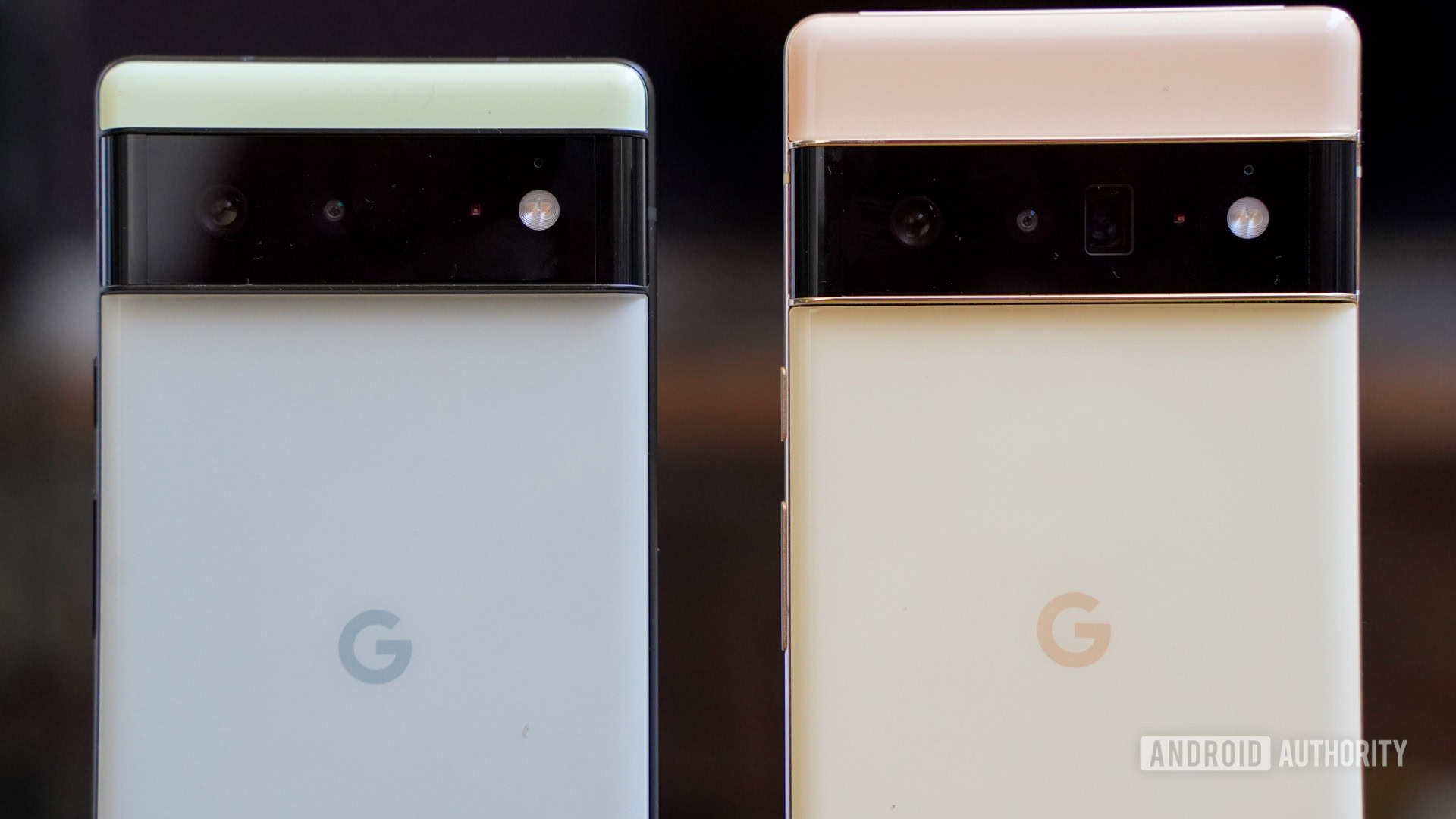
Google launched the Pixel 6 and Pixel 6 Pro on October 19, 2021. At launch, pre-orders started that same day. In the US, general sales started on October 28, 2021.


The vanilla Google Pixel 6 is the 2021 standard flagship from Google. It features numerous upgrades over all previous Pixels, including a new 50MP main camera sensor, an in-display fingerprint scanner, a new custom-made processor, and a huge 4,600mAh battery. It also features a radical redesign, which makes it look more like the Nexus 6P than any previous Pixel.
The Pixel 6 started at $599 / £599 / €649 for the model with 8GB of RAM and 128GB of internal storage. It comes in three colorways: Kinda Coral (shades of pink), Sorta Seafoam (green and yellow), and Stormy Black (black and gray). However, since the launch of the Pixel 7 series, Google has stopped selling the Pixel 6 at its official store. The outlets that still carry it are selling it at heavy discounts, with $399 being a common price.
Note that this unlocked model does not support mmWave 5G (it is sub-6GHz 5G only).

As one would expect, the Google Pixel 6 Pro is a bigger, more premium variant of the Pixel 6. It features a larger 120Hz curved display, an extra camera lens on the back (periscope telephoto), and a larger 5,000mAh battery.
The Pixel 6 Pro is also more expensive than the Pixel 6. It started at $899 / £849 / €899 for the model with 12GB of RAM and 128GB of internal storage. It also comes in three colorways: Cloudy White (white and gray), Sorta Sunny (yellow and orange), and Stormy Black (black and gray). Just like the Pixel 6, Google no longer sells the Pixel 6 Pro at the Google Store. Outlets that still carry it have it listed for much lower prices, with $599 being fairly common.
Are the Google Pixel 6 and Pixel 6 Pro worth buying?
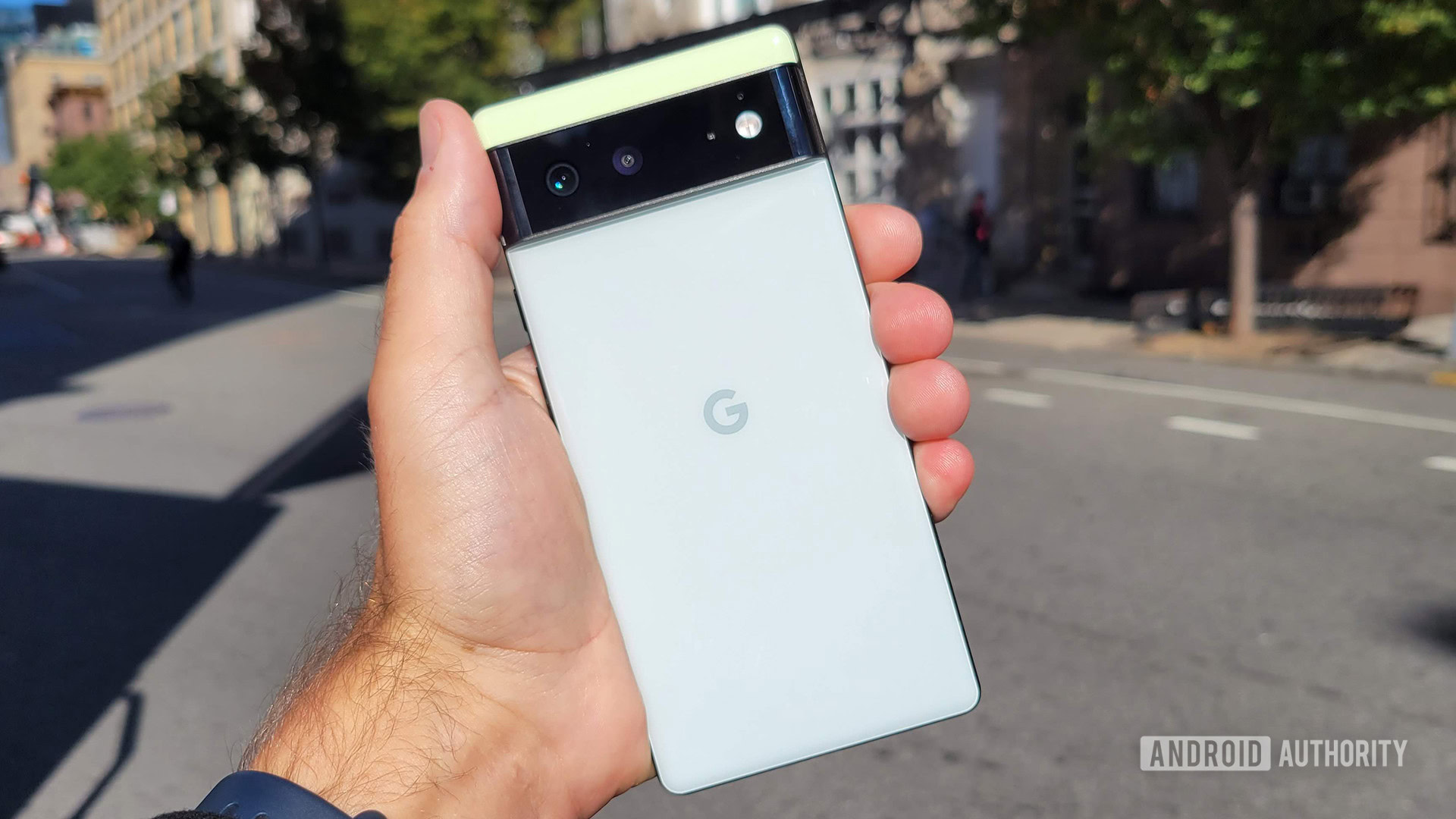
Before we get into the merits of the Pixel 6 and Pixel 6 Pro, do note that these phones are now last-gen. The Pixel 7 and Pixel 7 Pro — which launched in October 2022 — are now the best flagship phones from Google. Considering they are the same price as the Pixel 6 series in the United States, it makes little sense to get an older phone and pay the same amount. Likewise, the Pixel 8 series is just around the corner, so it might be worth waiting for those. However, we will still tell you the merits of the Pixel 6 series just in case there is something about the Pixel 7 series you don’t like, or you don’t want to wait for the Pixel 8.
As mentioned before, the Pixel 6 line is the first time Google has launched Pixel phones with no hardware compromises. Previously, you would need to have made certain sacrifices when buying a Pixel. For example, the Google Pixel 4 had a laughably small battery and relied totally on face unlock. The Google Pixel 5 from 2020 had a very small form factor, a rear-mounted fingerprint scanner, and a mid-range chipset. This is just how Pixels have always been.
In 2021, we finally got Pixel phones that met the rigorous hardware requirements consumers demand from flagship Android phones. The internal specs, cameras, and displays are all top-tier. Whether or not you like the new design is subjective, but at least the phones look and feel like premium devices.
These were the Pixel phones fans were waiting for.
All that is to say that these were the Pixels fans had been waiting for. Not only that, but even buyers who had historically scoffed at Pixels due to the previously mentioned limitations probably at least gave the Google Pixel 6 and Pixel 6 Pro a look.
Google also extended its software support promise for these new phones. The Pixel 6 series will see no less than five years of security patches and three years of version upgrades, making these phones a good investment for the long haul as it pertains to software.
What experts are saying about the Google Pixel 6 series
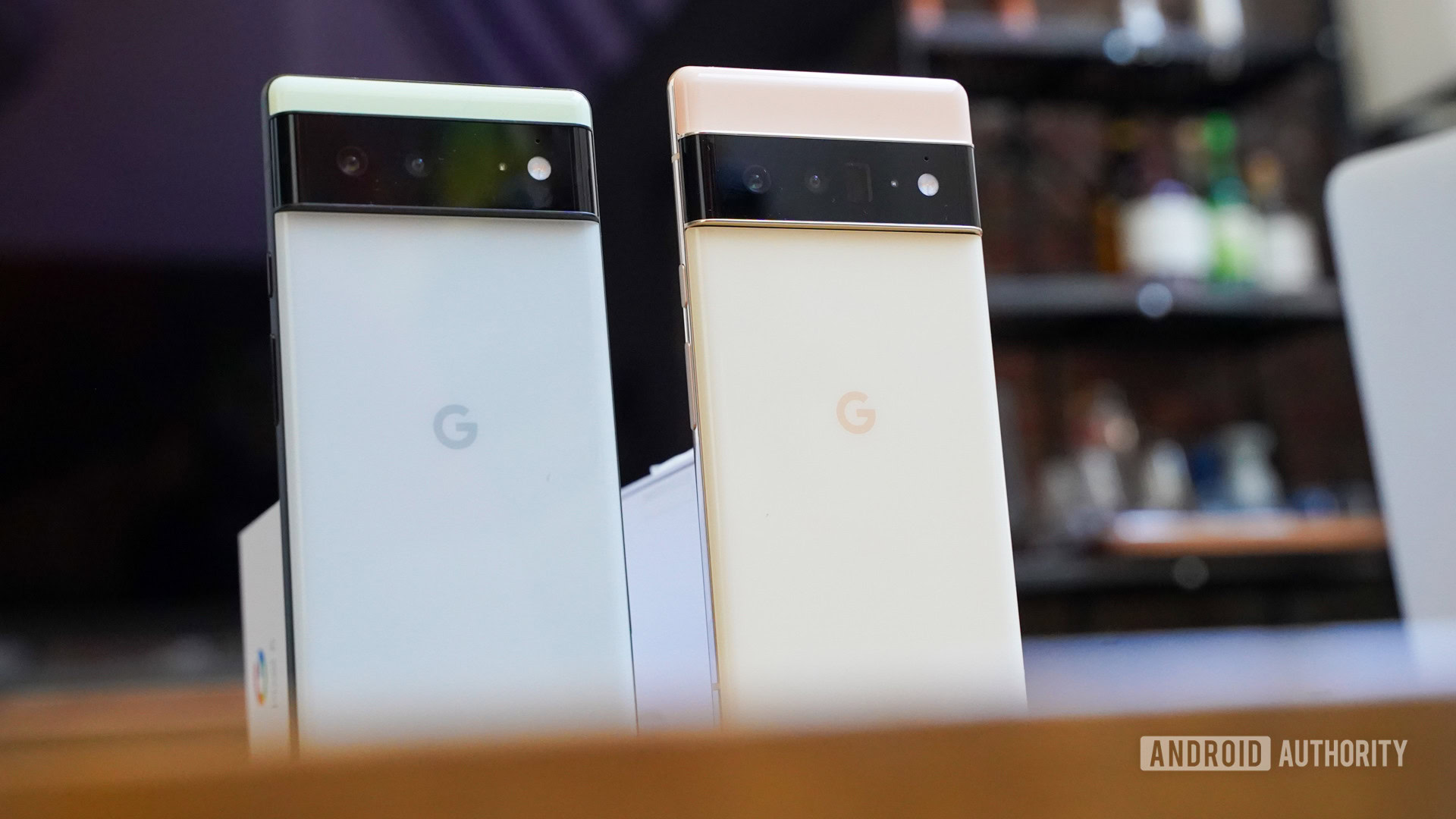
In our review of the Google Pixel 6 Pro, we gave it glowing marks. It received a 4.5/5 score and also received our coveted Editor’s Choice badge. In our opinion, it was the best phone Google had made up to that point and was one of the best Android phones you could get.
We heaped similar praise in our review of the Google Pixel 6. It received the same 4.5/5 score and the Editor’s Choice badge. It then went on to receive our Editor’s Choice Award for the best Android phone of 2021, which it earned mainly because of its price/value ratio.
Of course, the phones are not without flaws. Our chief criticism of both phones is the slower-than-average fingerprint sensor. Google has addressed this with software updates, but it is unlikely it will be able to make it as fast/efficient as competitors with updates alone. We also were slightly disappointed with the power of Google Tensor (more on that in a bit).
Around the web, you can similarly find glowing praise for the devices. Check out some reviews from other publications:
Google Pixel 6 Pro
- Andrew Hoyle at CNET: Hoyle made it very clear how he feels about the Pixel 6 Pro right in the headline: “the best Android phone money can buy.” He gave it a score of 9/10. He loved pretty much everything about the phone, with some minor criticisms of the battery and charging speeds.
- Cherlynn Low at Engadget: Low gave the Pixel 6 Pro a score of 91/100, representing another stellar review for the device. As with us here at Android Authority, her chief criticism was the slow fingerprint sensor. However, other than that, she basically had nothing but praise.
- James Peckham at TechRadar: Peckham awarded the Pixel 6 Pro with 4/5 stars, representing one of the lower scores we’ve seen for the phone. Peckham wasn’t impressed with the battery life of the phone, calling it just average. He also criticized the “limited storage” of the phone, which is interesting because you can get a 512GB model in certain countries. However, he overall enjoyed the device and called it “one of the very best phones on the market.”
Google Pixel 6
- Patrick Holland at CNET: Holland gave the vanilla model an 8.8/10, which is nearly the same CNET score as the Pro model. Like us, he criticized the fingerprint sensor and also agreed with his colleague Andrew Hoyle that battery life on the Pixel 6 series could be better. Still, he said the Pixel 6 is “everything I ever wanted in a phone.”
- Ron Amadeo at Ars Technica: Amadeo called the Pixel 6 series in general “easily the best Android phone on the market.” He did agree that Google isn’t competitive with charging speeds and battery life, but overall loved the phones. The pricing of the vanilla Pixel 6 was praised as well.
- Philip Michaels at Tom’s Guide: Finally, Philip Michaels thinks the Pixel 6 is “the best Android experience for the money.” He praised the unique design, great price, and AI-powered features of the phone. As usual, battery life and the slow fingerprint sensor were dinged.
Google Pixel 6 and Pixel 6 Pro specs
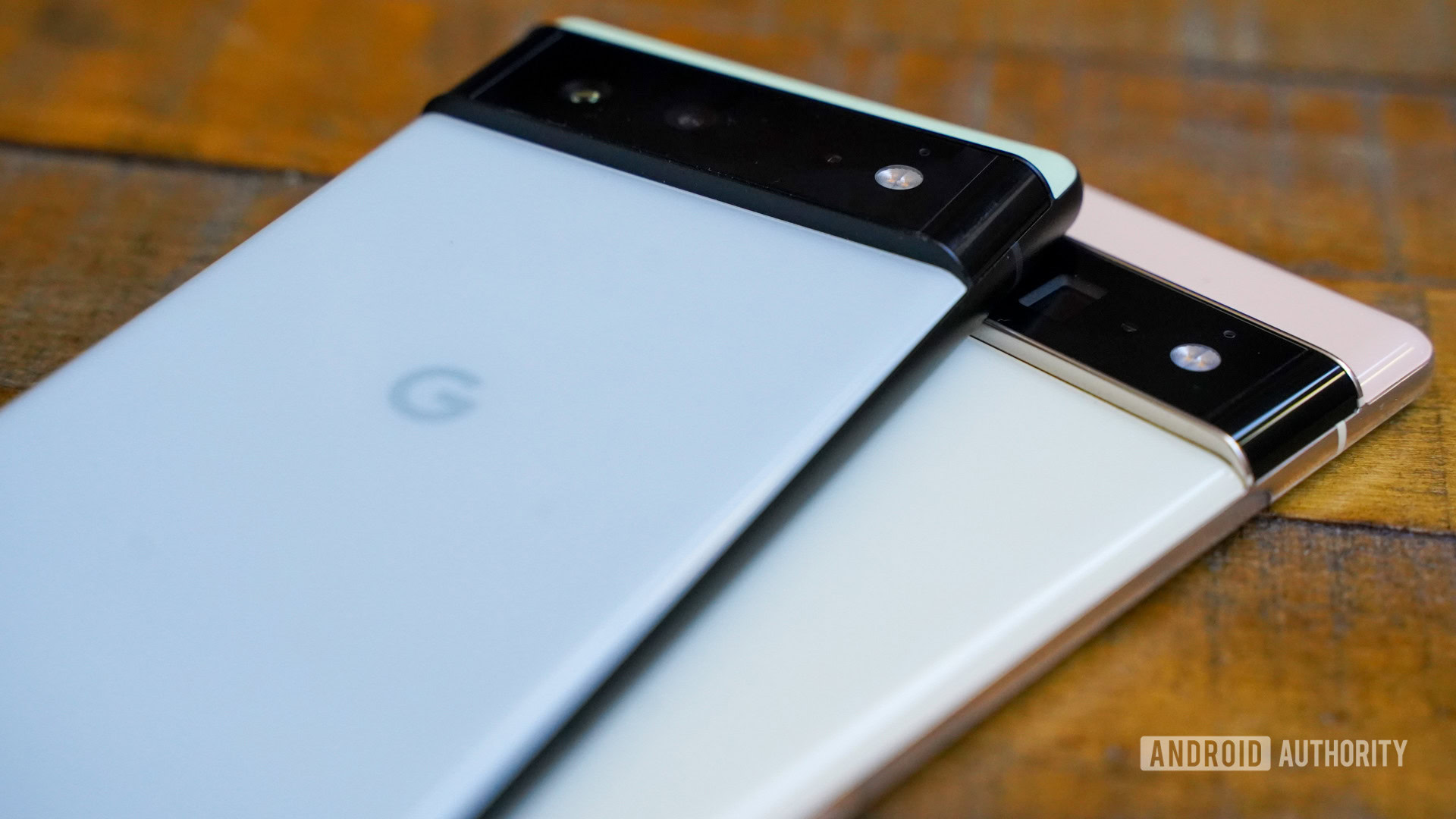
We say it all the time: raw specs aren’t everything. However, in the cases of the Google Pixel 6 and Pixel 6 Pro, they are very notable since this is the first time Google has launched true flagship hardware. Below, you’ll find a summary of what you can expect with each phone.
| Google Pixel 6 | Google Pixel 6 Pro | |
|---|---|---|
Display | Google Pixel 6 6.4-inch OLED 20:9 aspect ratio FHD+ resolution 2,400 x 1,080 411ppi 90Hz refresh rate HDR support 24-bit depth Gorilla Glass Victus front Gorilla Glass 6 back | Google Pixel 6 Pro 6.7-inch OLED 19.5:9 aspect ratio QHD+ resolution 3,120 x 1,440 512ppi 120Hz adaptive refresh rate HDR support 24-bit depth Gorilla Glass Victus front and back |
Processor | Google Pixel 6 Google Tensor Titan M2 security | Google Pixel 6 Pro Google Tensor Titan M2 security |
RAM | Google Pixel 6 8GB LPDDR5 | Google Pixel 6 Pro 12GB LPDDR5 |
Internal storage | Google Pixel 6 128GB or 256GB UFS 3.1 | Google Pixel 6 Pro 128, 256, or 512GB UFS 3.1 |
Battery and power | Google Pixel 6 4,600mAh (typical) Fast wired charging USB-PD 3.0 (PPS) 21W wireless charging (w/ Pixel Stand) 12W Qi wireless charging Battery share No charger in box | Google Pixel 6 Pro 5,000mAh (typical) Fast wired charging USB-PD 3.0 (PPS) 23W wireless charging (w/ Pixel Stand) 12W Qi wireless charging Battery share No charger in box |
Cameras | Google Pixel 6 Rear: - 50MP main 1.2 μm, ƒ/1.85, 82-degree FoV 1/1.31-inch sensor LDAF, OIS, and EIS - 12MP ultra-wide 1.25 μm, ƒ/2.2, 114-degree FoV - Laser AF Front: - 8MP single 1.12 μm, ƒ/2.0, 84-degree FoV | Google Pixel 6 Pro Rear: - 50MP main 1.2 μm, ƒ/1.85, 82-degree FoV 1/1.31-inch sensor OIS and EIS - 12MP ultra-wide 1.25 μm, ƒ/2.2, 114-degree FoV - 48MP telephoto 0.8 μm, ƒ/3.5, 23.5-degree FoV 1/2-inch sensor 4x optical zoom OIS and EIS - Laser AF Front: - 11.1MP single 1.22 μm, ƒ/2.2, 94-degree FoV |
Video | Google Pixel 6 Rear: 4K at 30/60FPS 1080p at 30/60FPS Front: 1080p at 30FPS | Google Pixel 6 Pro Rear: 4K at 30/60FPS 1080p at 30/60FPS Front: 4K at 30FPS 1080p at 30/60FPS |
Audio | Google Pixel 6 Stereo speakers Triple mics Bluetooth 5.2 No 3.5mm port | Google Pixel 6 Pro Stereo speakers Triple mics Bluetooth 5.2 No 3.5mm port |
Security | Google Pixel 6 In-display fingerprint Titan M2 chip 5 years security updates IP68-rated | Google Pixel 6 Pro In-display fingerprint Titan M2 chip 5 years security updates IP68-rated |
Buttons and ports | Google Pixel 6 USB-C 3.1 Gen 1 Power button Volume rocker Dual SIM (single nano and eSIM) No expandable storage No 3.5mm port | Google Pixel 6 Pro USB-C 3.1 Gen 1 Power button Volume rocker Dual SIM (single nano and eSIM) No expandable storage No 3.5mm port |
Connectivity | Google Pixel 6 Wi-Fi 6E (802.11ax) Bluetooth 5.2 NFC support | Google Pixel 6 Pro Wi-Fi 6E (802.11ax) Bluetooth 5.2 NFC support UWB chip |
Bands | Google Pixel 6 [5G Sub 6GHz] Model GB7N6 GSM/EDGE: Quad-band (850, 900, 1800, 1900 MHz) UMTS/HSPA+/HSDPA: Bands 1,2,4,5,6,8,19 LTE: Bands B1/2/3/4/5/7/8/12/13 14/17/18/19/20/25/26 28/29/30/32/38/39/40/ 41/42/46/48/66/71 5G Sub-62: Bands n1/2/3/5/7/8/12/14 20/25/28/30/38/40 41/48/66/71/77/78 eSIM [5G mmWave + Sub 6GHz] Model G9S9B3 GSM/EDGE: Quad-band (850, 900, 1800, 1900 MHz) UMTS/HSPA+/HSDPA: Bands 1,2,4,5,6,8,19 LTE: Bands B1/2/3/4/5/7/8/12/13/14 17/18/19/20/25/26/28/29 30/32/38/39/40/41/42 46/48/66/71 5G Sub-6: Bands n1/2/3/5/7/8/12/14 20/25/28/30/38/40 41/48/66/71/77/78 5G mmWave: Bands n257/n258/n260/n261 eSIM | Google Pixel 6 Pro [5G Sub 6GHz] Model GLUOG GSM/EDGE: Quad-band (850, 900, 1800, 1900 MHz) UMTS/HSPA+/HSDPA: Bands 1,2,4,5,6,8,19 LTE: Bands B1/2/3/4/5/7/8/12/13/14 17/18/19/20/25/26 28/29/30/32/38/39 40/41/42/46/48/66/71 5G Sub-62: Bands n1/2/3/5/7/8/12/14 20/25/28/30/38/40 41/48/66/71/77/78 eSIM [5G mmWave + Sub 6GHz] Model G8VOU GSM/EDGE: Quad-band (850, 900, 1800, 1900 MHz) UMTS/HSPA+/HSDPA: Bands 1,2,4,5,6,8,19 LTE: Bands B1/2/3/4/5/7/8/12/13 14/17/18/19/20/25 26/28/29/30/32/38/39 40/41/42/46/48/66/71 5G Sub-6: Bands n1/2/3/5/7/8/12/14 20/25/28/30/38 40/41/48/66/71/77/78 5G mmWave: Bands n257/n258/n260/n261 eSIM |
Software | Google Pixel 6 Android 12 Pixel UI | Google Pixel 6 Pro Android 12 Pixel UI |
Dimensions and weight | Google Pixel 6 158.6 x 74.8 x 8.9mm 207g | Google Pixel 6 Pro 163.9 x 75.9 x 8.9mm 210g |
Colors | Google Pixel 6 Stormy Black, Kinda Coral, Sorta Seafoam | Google Pixel 6 Pro Stormy Black, Cloudy White, Sorta Sunny |
In-box contents | Google Pixel 6 1m USB-C to USB-C cable (USB 2.0) Quick Switch adapter SIM tool Paperwork No charger in box (*France has charger and headphones included per local laws) | Google Pixel 6 Pro 1m USB-C to USB-C cable (USB 2.0) Quick Switch adapter SIM tool Paperwork No charger in box (*France has charger and headphones included per local laws) |
What is Google Tensor?
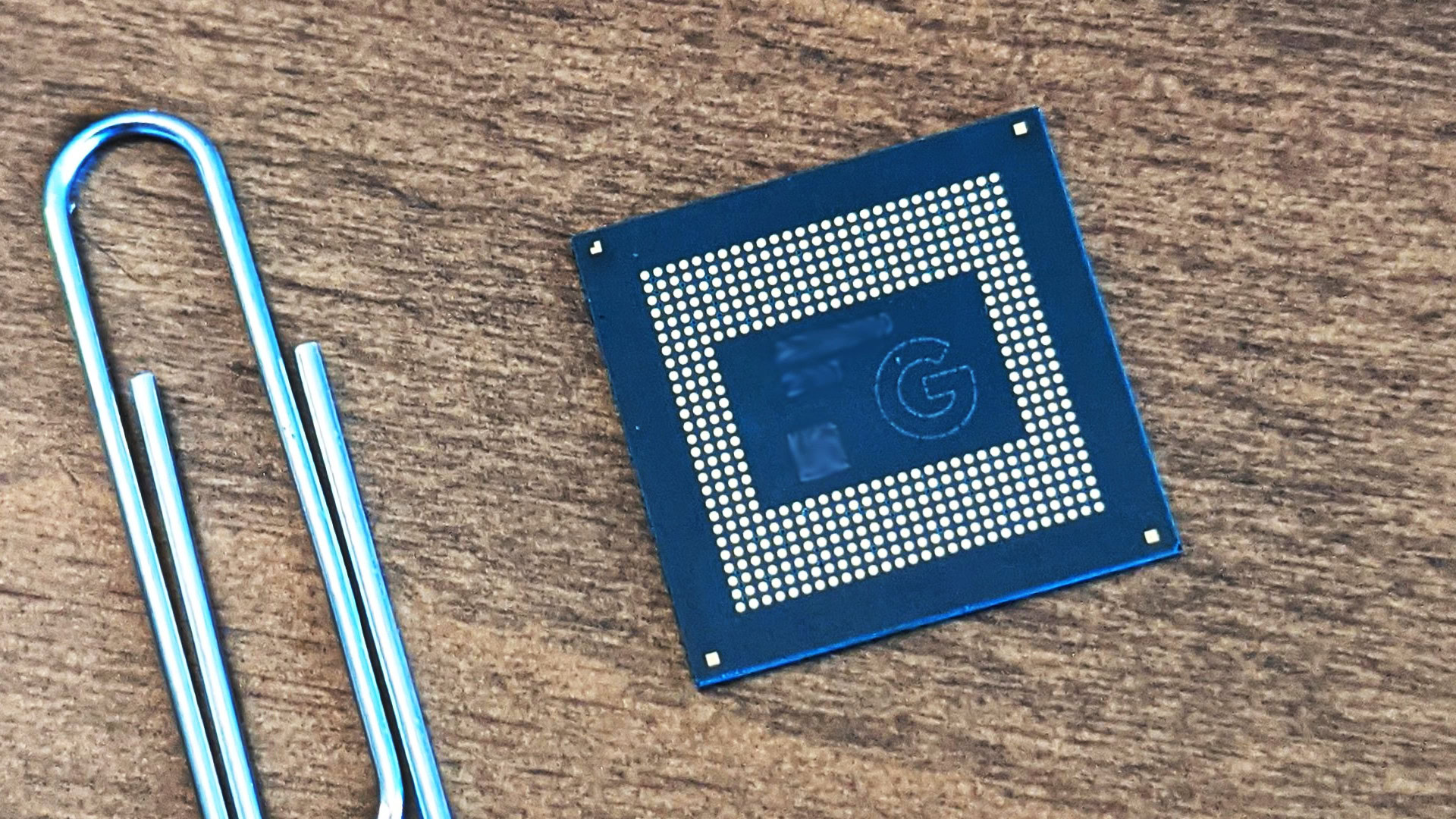
On the specs table above, you’ll note that the Google Pixel 6 and Pixel 6 Pro have a processor known as Tensor. Unlike most Android smartphones, this is not a chipset from Qualcomm, MediaTek, or Samsung. This is a processor designed by Google (and created in collaboration with Samsung) and represents the first Google-made mobile chipset ever.
We have a full breakdown of what to expect from Tensor. We also have a Speed Test G run of Tensor to give you an idea of its power. In a nutshell, the processor shares some similarities to Samsung’s Exynos 2100 chipset found in the Galaxy S21 series. This makes sense since Google worked with Samsung to build the chip. However, Google has made many tweaks to the inner workings, including a different 2+2+4 CPU layout and its own Tensor processor to increase the machine learning and AI capabilities of the chip.
However, the SoC wasn’t quite on the cutting edge of CPU and GPU hardware in 2021, let alone in 2023. You should not expect Tensor to surpass the performance capabilities of the Qualcomm Snapdragon 888, let alone the newer Snapdragon 8 Gen 1 or Snapdragon 8 Gen 2. Instead, you should expect the chip to perform at a flagship level and have a few AI-powered tricks up its sleeve that competitor chipsets lack.
Are the Pixel 6 and Pixel 6 Pro cameras good?
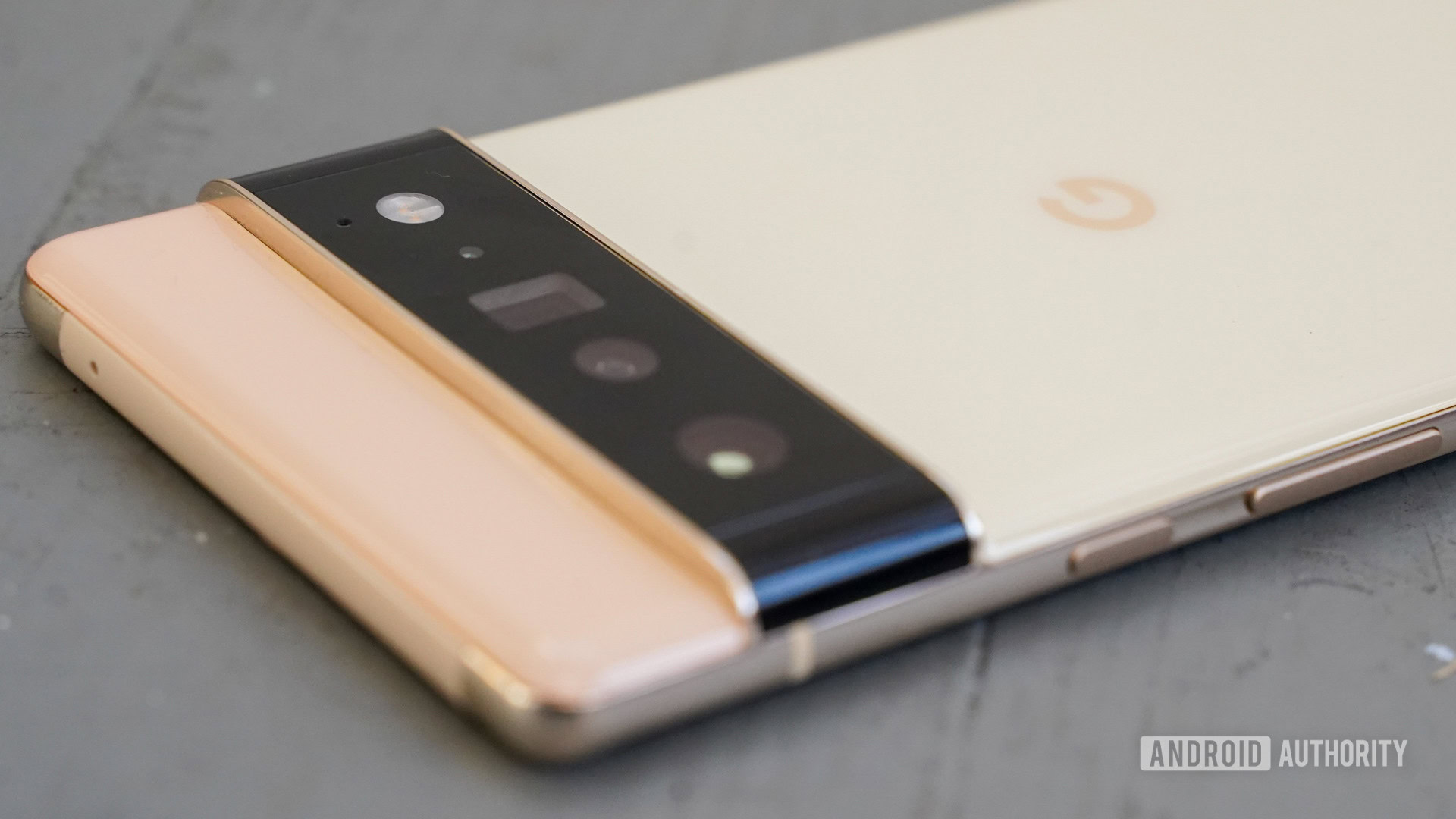
For years prior, Google’s phones have been market leaders when it comes to photography. It’s been able to do that while barely updating the hardware that appears in its phones. In true Google fashion, it has relied on its top-tier computational photography software to do all the heavy lifting. This helped it earn a yearly spot on the list of the best camera phones.
In 2021, though, the Google Pixel 6 and Pixel 6 Pro finally upped the hardware ante. The two phones featured newer and better camera sensors than we had ever seen in a Pixel before. This leap forward in hardware quality, combined with Google’s usual market-leading software, made the Pixel 6 and Pixel 6 Pro some of the best camera phones of 2021.
Here’s what each phone is packing as far as hardware:
Google Pixel 6
- 50MP wide with EIS and OIS
- 12MP ultrawide
- Laser auto-focus
- 12MP selfie camera
Google Pixel 6 Pro
- 50MP wide with EIS and OIS
- 12MP ultrawide
- 48MP telephoto with EIS, OIS, and 4x optical zoom
- Laser auto-focus
- 12MP selfie camera
While we’ve seen more advanced camera systems on other phones, the specs above are solid.
Google Pixel 6 Pro camera examples
In our review of the Pixel 6 Pro, we found the camera to be exemplary. It probably isn’t the best camera we’ve ever tested, but it is certainly one of the best of 2021.
Here are some sample images captured with the Pixel 6 Pro’s main lens.
These photos look great to us. Note the natural color on show here. This is great for professionals as accuracy is something they would prize. However, general consumers usually prefer more “pushed” photos with heavy color saturation, such as those you usually get from Samsung phones. The Pixel 6 Pro prizes accuracy above saturation, so keep that in mind if you prefer one or the other.
The ultrawide camera produces some great results, too:
We were also very impressed with the zoom capabilities of the telephoto lens:
There are also a lot of terrific camera features that only appear on the Pixel 6 series. If you want a deeper dive, we recommend reading our full review of the Pixel 6 Pro.
Google Pixel 6 camera examples
For the vanilla Pixel 6, here are some example shots:
Generally, the Pixel 6 and Pixel 6 Pro have the same camera hardware. The Pixel 6 Pro has a telephoto lens, but that’s only advantageous when using telephoto features — in particular, zooming in on subjects. If you don’t use that feature, though, you should see pretty much the same results on the Pixel 6 as you would on the Pixel 6 Pro.
Here are some other shots:
In brief, we loved the camera quality of the Pixel 6, especially when you consider its low price. Once again, if you’d like to go deeper into this, check out our full review of the Pixel 6.
How is the Google Pixel 6 and Pixel 6 Pro battery life?
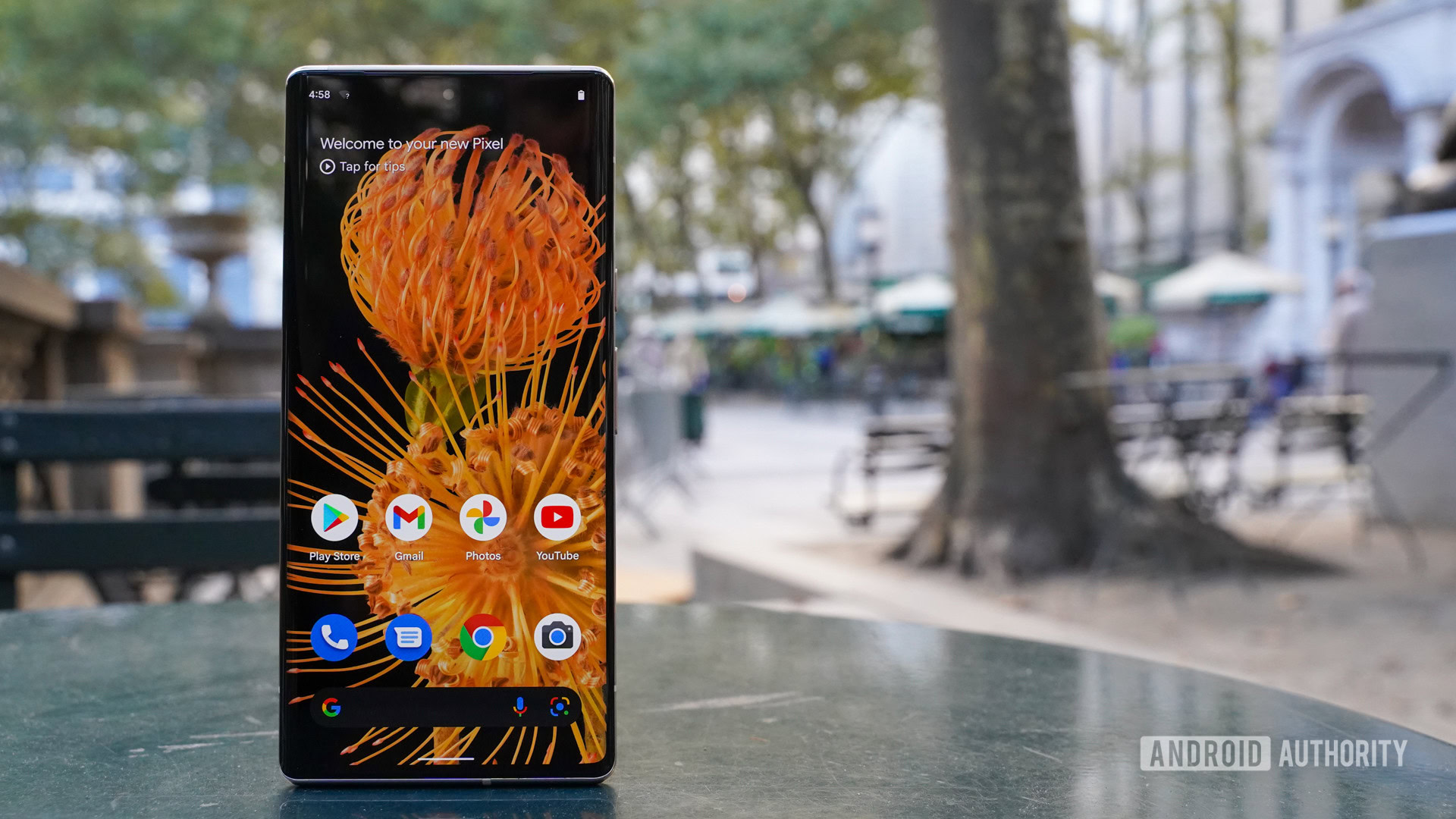
The Google Pixel 6 Pro — and the newer Pixel 7 Pro — have the largest battery capacities of any Pixel phone ever. At 5,000mAh, it is roughly 7% larger than the one we saw in the Google Pixel 5a, which was the former battery leader in the Pixel line. In our Pixel 5a review, we were blown away by how long the phone lasted on a charge.
As one would expect from a battery of that size, we were impressed with the battery life of the Pixel 6 Pro. We found it nearly impossible to kill the battery within one day of use. Even with pushing the limits, we found we still had about 20% of the battery left at the end of each day. That makes the phone easily a two-day device, assuming light-to-moderate usage.
As for the vanilla Pixel 6, that phone has a battery about the same size as the one in the Pixel 5a. Since the Pixel 6 has a smaller, lower-resolution display than the Pixel 6 Pro, it should be unsurprising to learn we were also very impressed with the battery life on this phone. We found it nearly impossible to kill the battery with just one day of normal use.
Either way, the Google Pixel 6 and Pixel 6 Pro both fast charge with a USB-C cable. Unfortunately, you’ll need to grab your own charger for this, as the Pixel 6 series ships without chargers in the box (except in France, where a charger is required by law). Much like phones in the Galaxy S series, you’ll also need an adapter that supports USB Power Delivery with the Programmable Power Supply (PPS) standard to achieve the top speeds. Check out our best wall chargers list for some great options.
The Pixel 6 has 21W wireless charging, and the Pixel 6 Pro has 23W wireless charging, although you’ll need the proprietary Pixel Stand (2021) to see those speeds. With a standard Qi-compatible charger, you’ll see 12W speeds. There is also Battery Share onboard, aka reverse wireless charging.
No, neither phone has a charger in the box. You will need to buy a charger or use one you already own. A PD PPS-compliant charger would be best. The only exception to this is France, where smartphones need to come with a charger and headphones in the box by law.
The Pixel 6 can wirelessly charge at 21W, while the Pixel 6 Pro can charge wirelessly at a speed up to 23W. However, to get those speeds, you’ll need the proprietary Pixel Stand (2021) from Google. You can still use your own wireless chargers, but they won’t deliver the full 23W speed.
Google Pixel 6 software and updates
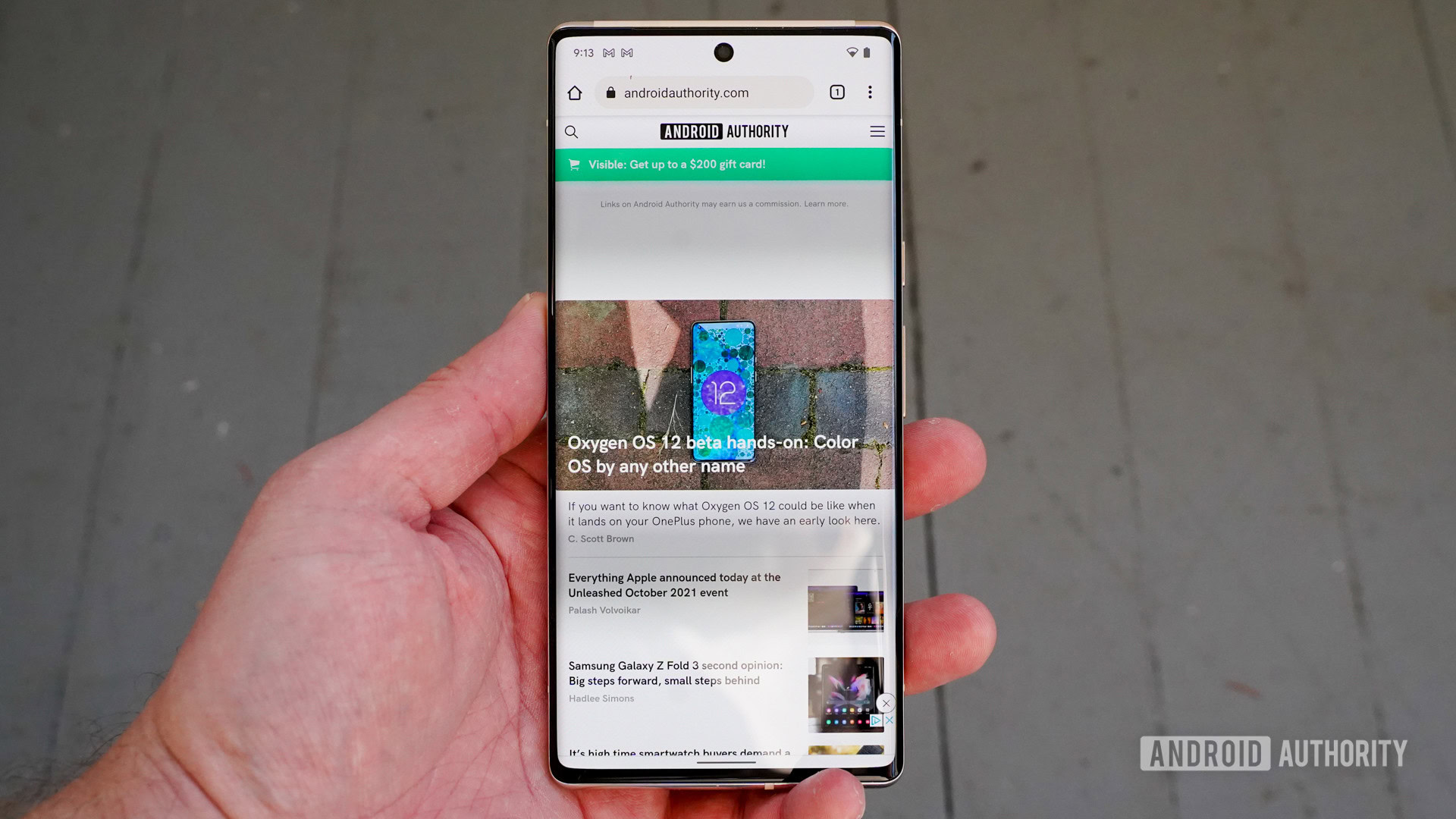
Google has always wanted the Pixel line to be the iPhone of the Android world. However, iPhones get up to six years of iOS version upgrades, and Pixel phones have never been able to match that.
That changed with these models. For the first time ever, Google promised five years of support for the Google Pixel 6 and Pixel 6 Pro. Now, five years of Android support is not the same as five years of iOS support for iPhones. Those five years will cover security patches and other updates, not new Android versions.
There will be three Android upgrades and five years of security patches for the Pixel 6 series.
Instead, Google will offer up to three Android version upgrades for the Pixel 6 line. The Pixel 6 series launched with Android 12 and already have Android 13. They will get Android 14 and Android 15 and then hang on to Android 15 from then on. Once you receive Android 15, you should see two more years of security support before the phone would officially reach its end-of-life.
The big reason Google is able to offer this is due to Tensor, the Pixel 6 chipset. Since Google won’t need to rely on Qualcomm for Android support, it can finally offer an extended schedule.
Regardless, Pixels will still be some of the very first phones in the world to get the latest Android versions. The bottom line here is that if Android updates and upgrades are important to you, the Pixel 6 series would be a good investment.
Google has promised to deliver three Android upgrades. The phones shipped with Android 12 and already have Android 13, so that means they’ll get Android 14 and close out on Android 15.
Pixel 6 Pro vs Pixel 5: What’s new?
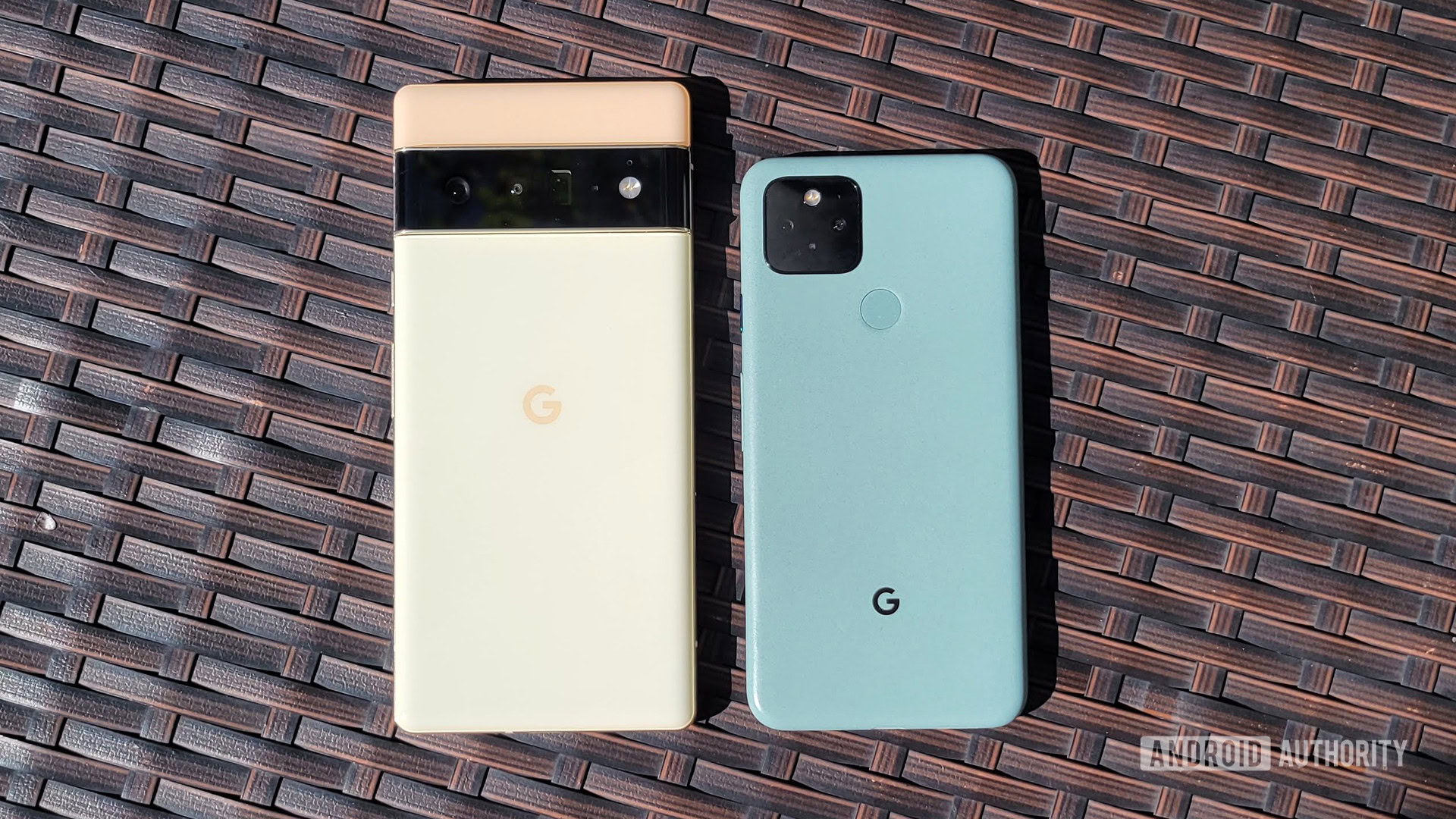
Technically, the Google Pixel 5 was the 2020 top-tier phone from Google. The Google Pixel 6 Pro is the 2021 top-tier phone from the company. As such, the Pixel 6 Pro could be viewed as the follow-up to the Pixel 5.
However, this feels silly to even think about. The Pixel 6 Pro is leaps ahead of the Pixel 5 in nearly every respect. It even looks drastically different. Really, the Pixel 5 (and the Pixel 5a) was kind of the end of one era of Pixel phones, and the Pixel 6 series is the start of another.
Regardless, here are the main differences between the Pixel 6 Pro and Pixel 5:
- Display: The Pixel 6 Pro is a massive step up over the Pixel 5 when it comes to the display. The Pixel 5 had a 6-inch OLED panel with a 90Hz refresh rate and a 1080p resolution (2,340 x 1,080). The Pixel 6 Pro has a 6.7-inch LTPO OLED panel with a 120Hz refresh rate and a 1440p resolution (3,120 x 1,440).
- Processor: The Pixel 5 had a decidedly mid-range processor in the Qualcomm Snapdragon 765G. The Pixel 6 Pro has the Google-made Tensor chipset that can exist very comfortably next to other flagship chipsets of 2021.
- Camera: The Pixel 5 had two camera lenses on the rear: a 12.2MP main and a 16MP ultrawide. The Pixel 6 Pro has a 50MP main, 12MP ultrawide, and 48MP telephoto. This makes the Pixel 6 Pro a more capable shooter as well as more versatile compared to the Pixel 5.
- Biometrics: The Pixel 6 Pro and Pixel 6 are the first phones from Google with in-display fingerprint scanners. The Pixel 5 had a capacitive scanner on the back of the phone.
- Battery/power: The Pixel 6 Pro’s battery is roughly 19% larger than the Pixel 5’s. It also charges faster compared to the Pixel 5. However, the Pixel 5 had a charger in the box, which the Pixel 6 Pro lacks. The Pixel 6 Pro also charges faster wirelessly (23W instead of 12W), but you’ll need the Pixel Stand (2021) to get that speed.
- Design: The Pixel 6 Pro has a radical redesign as compared to the Pixel 5. The Pixel 5 looked a lot like other Pixels with some subtle refinements, but the Pixel 6 Pro looks like a whole new phone. The Pixel 6 Pro also comes in three colorways, while the Pixel 5 only came in two.
Google Pixel 6a: What’s different?
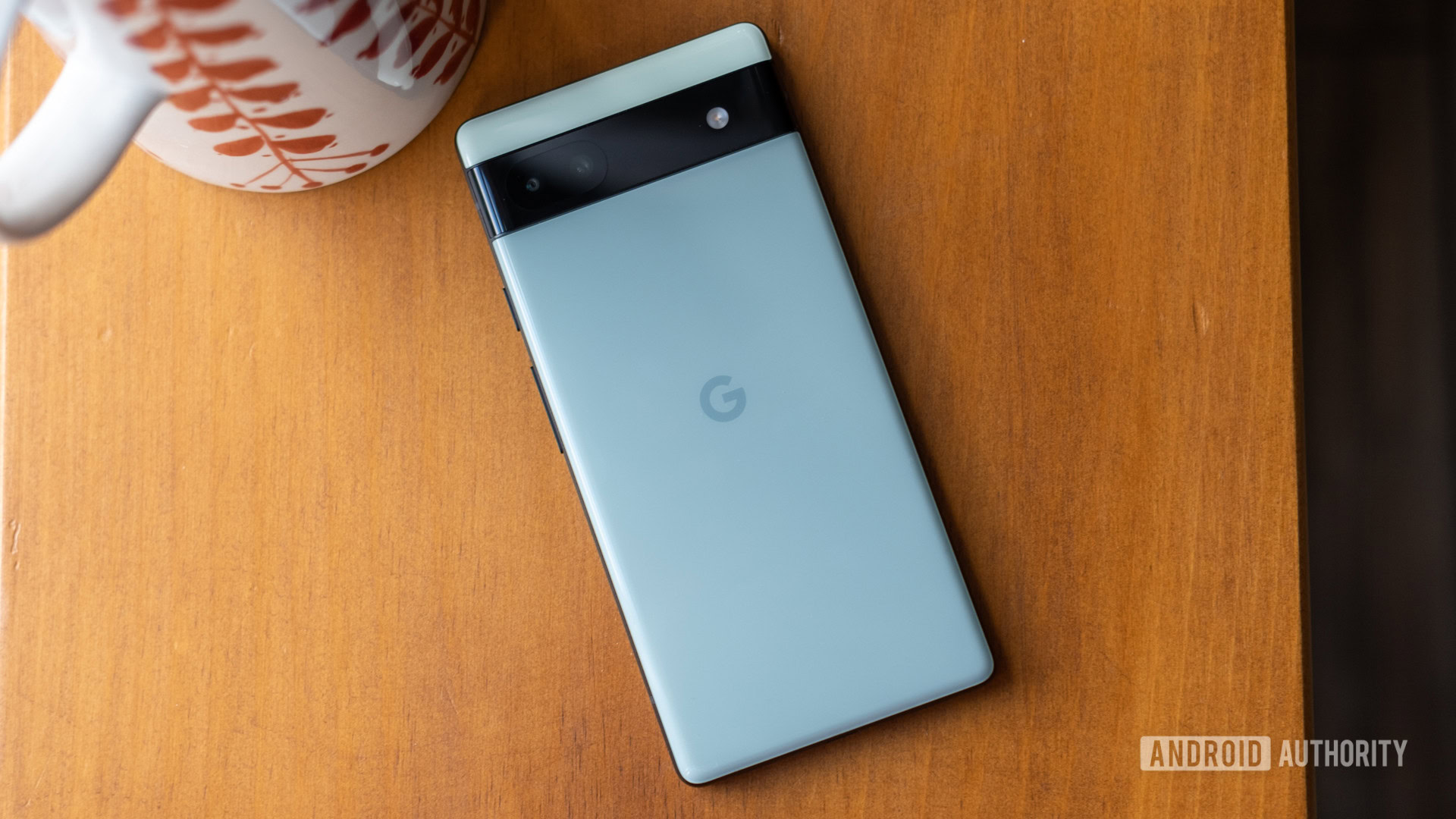
On May 11, 2022, Google launched a cheaper version of the Pixel 6, known as the Google Pixel 6a. This phone had a lower entry price of $449, but that subsequently dropped to $349 with the launch of its successor, the Pixel 7a. It hit general sale on July 28, 2022. Be sure to read our full review of the Pixel 6a.


Basically, the Pixel 6a follows the formula set by previous “a-series” phones from Google. It offers the core experience of the Pixel 6 series while cutting out various features to lower the price. Here are the major differences between the vanilla Google Pixel 6 and the Pixel 6a:
- Dimensions and weight: The Pixel 6a is smaller and lighter than the Pixel 6. The Pixel 6a is sized at 152.2 x 71.8 x 8.9mm and weighs 178g. The Pixel 6, by comparison, is sized at 158.6 x 74.8 x 8.9mm and weighs 207g.
- Display: The Pixel 6a has a 6.1-inch OLED display with a 60Hz refresh rate. The Pixel 6 has a 6.4-inch AMOLED display with a 90Hz refresh rate.
- Durability: The Pixel 6a is covered with Gorilla Glass 3 on the front, which is inferior to the Pixel 6’s Gorilla Glass Victus. Meanwhile, the Pixel 6a has a plastic back while the Pixel 6 has a glass back using Gorilla Glass 6. The Pixel 6a is only IP67-rated against water and dust while the Pixel 6 has a full IP68 rating.
- RAM/storage: With the Pixel 6a, you have one RAM/storage option: 6GB of RAM and 128GB of storage. The Pixel 6 has two options: 8/128GB and 8/256GB. Neither model supports microSD cards.
- Cameras: The Pixel 6a essentially adopts the camera system from the Pixel 5a: a 12.2MP main with a 12MP ultrawide. The Pixel 6 has a more advanced system with a 50MP main and 12MP ultrawide. The phones share the same selfie camera system, though.
- Power: The Pixel 6a has a 4,410mAh battery, smaller than the Pixel 6’s 4,614mAh cell. The Pixel 6a also charges slower with a cable (18W maximum compared to the 30W maximum of the Pixel 6), and the Pixel 6a does not have wireless charging.
- Security: The Pixel 6a has a different fingerprint sensor than the Pixel 6. It is actually superior to the Pixel 6’s and likely the same as what we see in the Pixel 7 series.
- Colors: The Pixel 6a comes in three colors: Chalk (light gray), Charcoal (dark gray), and Sage (green). The Pixel 6 comes in three wholly different colors: Kinda Coral (shades of pink), Sorta Seafoam (green and yellow), and Stormy Black (black and gray).
What are some good Pixel 6 and Pixel 6 Pro alternatives?
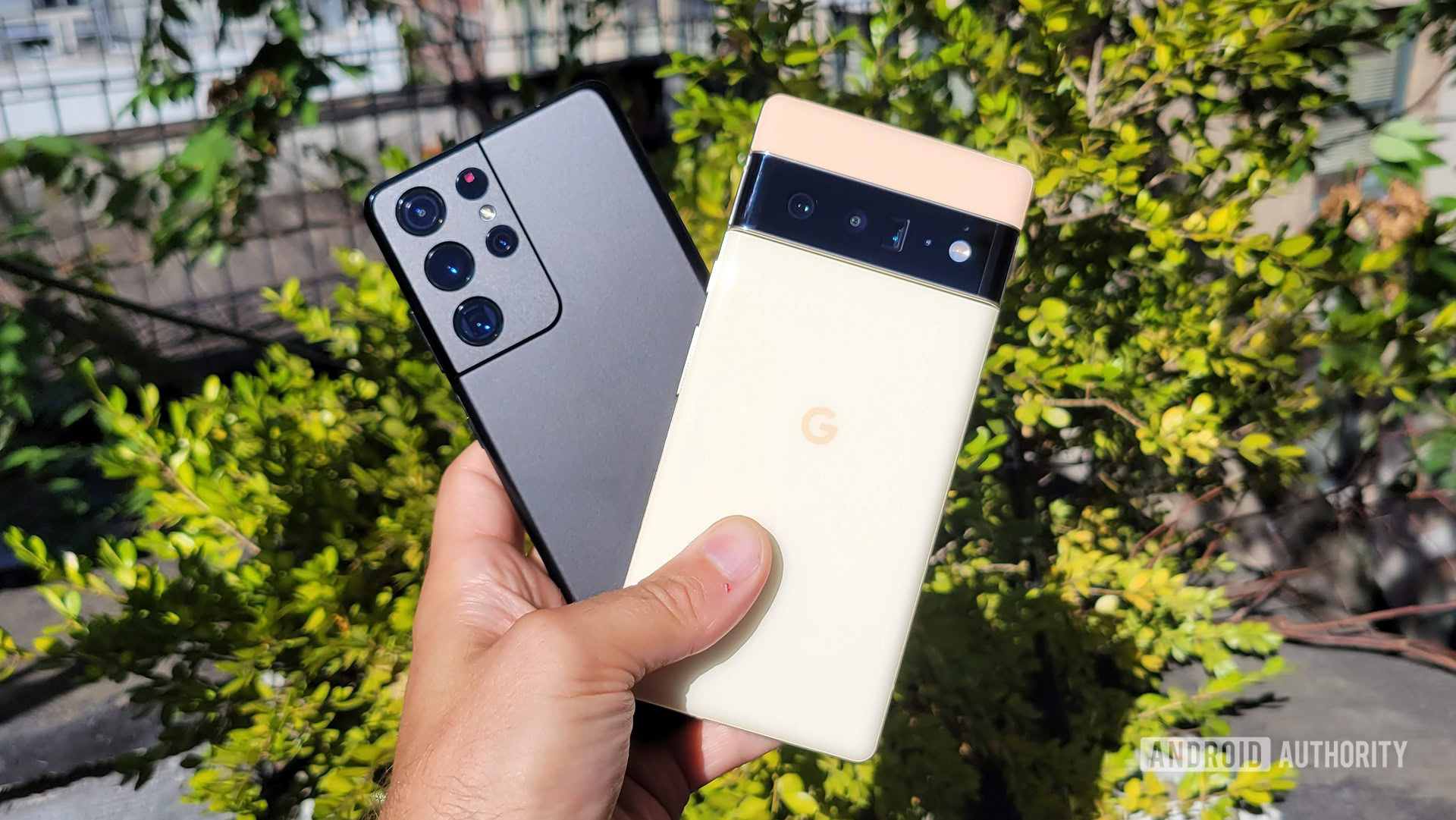
There’s a lot to love about the Pixel 6 series. However, no phone is ever going to be perfect for everyone. If you like the Pixel 6 or Pixel 6 Pro but want something a little different, here are some other choices you might want to look into.
Do note the price of the vanilla Pixel 6 undercuts competitors. Even if you can find a comparable phone, you’ll likely pay more for it than you would the entry-level Pixel. The Pixel 6 Pro, though, is priced along the same lines as its competitors.
Google Pixel 6 alternatives
- Google Pixel 7 ($599) — The most obvious alternative to the Pixel 6 is the newer Pixel 7. It has the same camera hardware, a better processor, different color options, and will get software support longer than the Pixel 6. The only real downside is the battery of the Pixel 7 is slightly smaller, but it shouldn’t make that much of a difference.
- Google Pixel 6a ($349) — If you like the idea of being in the Pixel ecosystem but don’t want to shell out for the Pixel 6, the Pixel 6a might be worth a look. Note that it is now $100 cheaper than it was when it launched, thanks to the next phone on this list.
- Google Pixel 7a ($449) — This is the newest non-foldable Pixel phone. It features a lot of the same specs as the Pixel 7 and even includes wireless charging and a 90Hz refresh rate. This is a great option if you want the Pixel 6’s current cheaper pricing but a longer commitment from Google for Android upgrades.
- Samsung Galaxy S22 ($699) — The Galaxy S22 will have some advantages over the Pixel 6. One of the biggest is that it has a telephoto lens on the rear, which the Pixel 6 lacks. The Galaxy S22 also has a longer update promise with a commitment of four versions of Android from Samsung. Ultimately, the Galaxy S22 is probably a better phone than the Pixel 6, but the Pixel 6 has the advantage of being at least $100 cheaper and offering a very similar package.
- iPhone 14 ($799) — If you don’t want to stick with Android, the iPhone 14 is a very comparable device to the Pixel 6. It has the same number of cameras and other similar hardware. The Pixel 6, though, will have a higher display refresh rate than the iPhone 13’s typical 60Hz.
Pixel 6 Pro alternatives
- Google Pixel 7 Pro ($899) — If you’re looking at the Google Pixel 6 Pro, you might as well jump up and get the Pixel 7 Pro. It’s the same price and has better hardware across the board, including the cameras and the processor. There are pretty much no downsides compared to the Pixel 6 Pro, so unless you’re looking at discounts for older models, go with the Pixel 7 Pro.
- Samsung Galaxy S23 Ultra ($1,199) — The Samsung Galaxy S23 Ultra is one of our favorite phones of 2023 so far. Its camera system is a marvel, its specs and hardware are top-tier, and its design harkens back to Galaxy Note phones with an included S Pen. However, it is still really expensive, so keep that in mind.
- iPhone 14 Pro ($999) — You’d need to leave Android to get this one, but the 2022 entry-tier Pro model iPhone is quite comparable to the Pixel 6 Pro. Cameras and other hardware specs are similar, including the shared 120Hz display refresh rate.
- OnePlus 11 ($699) — For $200 less than the MSRP of the Pixel 6 Pro, the OnePlus 11 offers a similar package. You’ll get a much faster processor in the Snapdragon 8 Gen 2, way faster wired charging, a better display, and more. However, you will lose out on wireless charging, an IP rating, and a periscope telephoto zoom. Ultimately, we’d suggest going with the Pixel 6 Pro or Pixel 7 Pro over this, but OnePlus does have some die-hard fans.
- Sony Xperia 1 IV ($1,599) — One of the most expensive phones of 2022 is also one of the best. The Xperia 1 IV is the best-ever phone currently available from Sony and features a top-tier camera system, attractive design, simple stock-like software, and even a headphone jack. You’ll pay a lot, but you’ll get a lot. Just don’t expect good software support!
Where to buy the Google Pixel 6 and Pixel 6 Pro
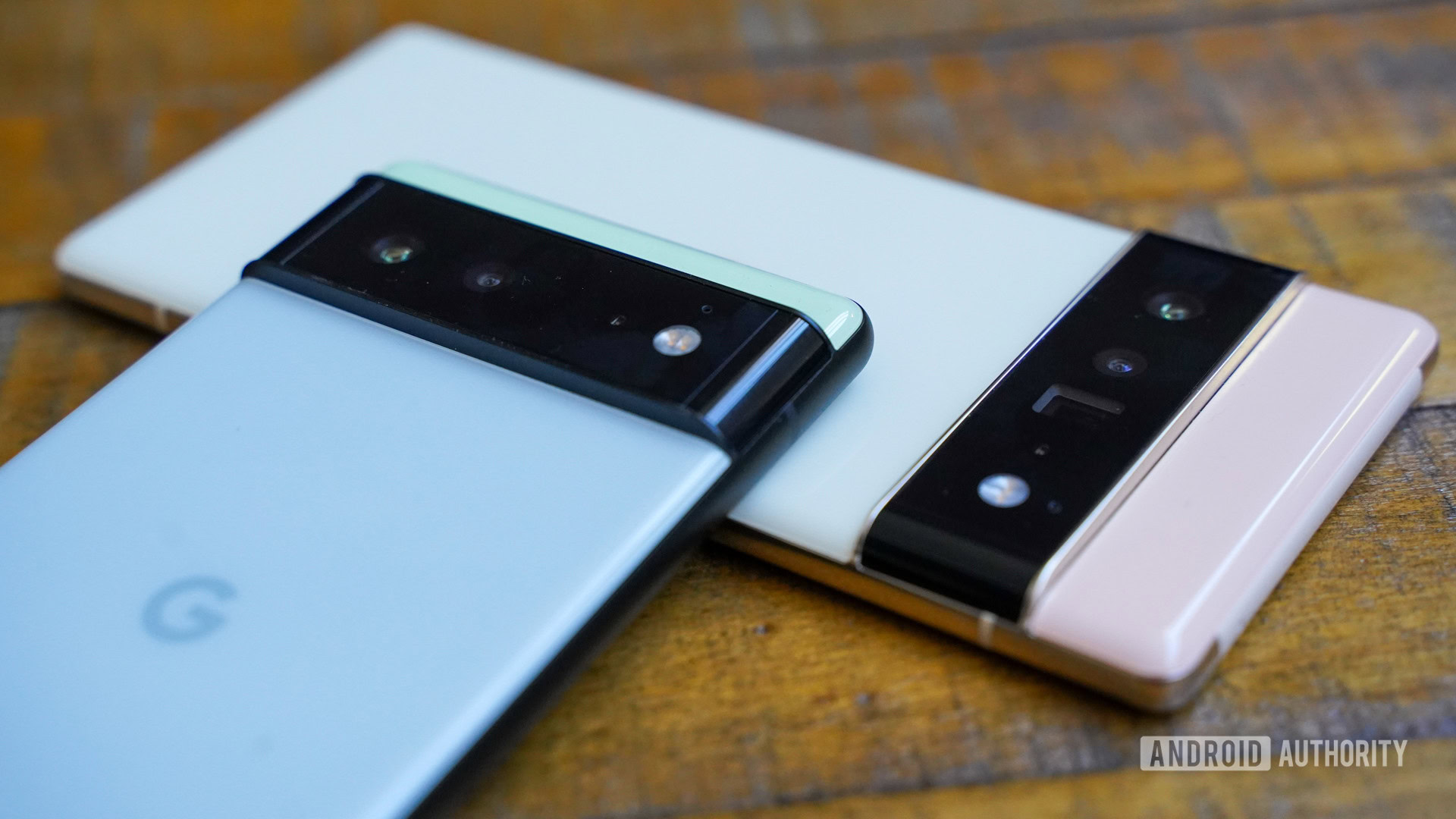
- Pixel 6 (128GB): $599 / £599 / €649 / CA $799 / AU $999
- Pixel 6 (256GB): $699 / CA $929 / AU $1,129
- Pixel 6 Pro (128GB): $899 / £849 / €899 / CA $1,179 / AU $1,299
- Pixel 6 Pro (256GB): $999 / £949 / €999 / CA $1,309 / AU $1,449
- Pixel 6 Pro (512GB): $1,099 / AU $1,599
With the launches of the Pixel 7 and Pixel 7 Pro, it’s not as easy to get a Pixel 6 series phone anymore. If you do find one, you’ll likely spend less than the original MSRP, however, which is always good news. Still, we’d highly suggest getting a Pixel 7 or Pixel 7 Pro instead, simply because the software update commitment will be longer.
That being said, here’s how to get one and how much they’ll cost you. Pre-orders started on October 19, 2021, with general availability starting on October 28 globally.



Help other readers out
Will you be buying a Pixel 6 or Pixel 6 Pro?
Is the Google Pixel 6 Pro worth the price?
Are you a fan of the new designs of the Pixel 6 series?
FAQs
We think the Pixel 6 is worth buying, thanks to its combination of clean software, frequent updates, and excellent cameras. It also starts at just $599, which is a tough price to top for a flagship experience. However, the Pixel 7 is likely the better buy for most people since it’s newer and the same price.
Yes, both phones have a full IP68 rating against water and dust.
No, neither phone has a 3.5mm headphone port. Google has not offered this in the main Pixel line for many years.
Sort of. The unlocked Google Pixel 6 ($599) only connects to Sub6 5G connections. If you buy the Pixel 6 from Verizon or AT&T, though, it will cost more and support both Sub6 and mmWave. All models of the Pixel 6 Pro support both 5G standards.
Yes, the Pixel 6 is Google’s standard flagship for 2021. It offers the powerful Tensor chip with a 6.4-inch display and premium materials. It’s also one of the most affordable flagships you can get.
The Pixel 6 packs some of Google’s best battery life yet. The 4,614mAh cell lasts all day long, and we were able to push it well into a second day in our testing. It also uses USB PD PPS to recharge at up to 21W.